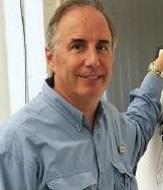Creating Future Engineers
Advanced Career Aerospace Engineering
Bill Vivian teaches Aerospace Engineering, an Advanced Career curriculum. Vivian is an electrical engineer by training with 26 years of experience in corporate America. He was a career and technical education teacher before transitioning to AC.
Sun Valley High School, North Carolina
Vivian believes the Aerospace Engineering curriculum is helping his students to learn to think like engineers. “The whole engineering process and the steps it takes to plan, create, evaluate, improve and communicate are embedded in the curriculum. It is great to watch them [his students] progress as they advance through the projects.”
AC Excites Students and Teachers
Vivian explained that AC has rejuvenated his teaching career. “I can’t tell you how excited I get just being there. Some teachers don’t like their jobs or going to work. I love coming to work, and my students love coming to class.” Vivian’s students have fed off his energy and enthusiasm. “They know that T minus zero is presentation day,” and they are motivated to meet his and their expectations.
“These students see a future that they didn’t know existed.”
AC for All Levels of Students
Vivian has been able to reach not only the advanced, intrinsically motivated students, but those who commonly lack persistence and effort. His colleagues have noticed. “I would say my biggest success is that other teachers come and ask me how I am teaching certain students who they can’t get anything out of, and how is it that I can get these students to do all these things.I would like to say that it is all me, but it is the program itself. It is so well thought out. These students see a future that they didn’t know existed.”
Teacher’s Confidence Grows
Prior to AC, Vivian was not confident in his ability to create meaningful learning opportunities for high school students using such a challenging curriculum. “I didn’t know what I was going to get out of AC in the beginning. When I first started, I thought there was no way I was going to be able to do all this, but, I learned, modified and adjusted my mentality. The more support I received from the Southern Regional Education Board, the more confident I became.”
Vivian’s confidence has certainly grown over time. His ability to create a classroom environment that fosters student ownership has evolved into a personal strength. “Aerospace is project-driven and that is not something I have done in the past. Traditionally classes are book-fed in terms of starting with A and ending at Z. AC is more blended: free speaking, free thinking and collaboration with team members.”
Engaging Students Through Project-Based Learning
Vivian has learned that a project-driven curriculum opens students up to experiencing content in a more engaging manner. “They are discovering career possibilities and are beginning to see a role for themselves in the community. The field of aerospace is not just about flying; the curriculum has many spinoffs: building and developing railcars and stockcars and other things that are aerospace-oriented. They’re beginning to understand the association between the concepts of aerodynamics and the skills needed to work in an aerospace career field.”
Involving Business Leaders: Student Learning Takes Flight
The AC curriculum has also brought about opportunities for Vivian to get community leaders and parents involved in his students’ learning. He has used his course as a platform to connect with pilots and engineers who can share their experiences and give guidance. Vivian has also partnered with the local regional airport to get flight time for his students so they can earn their pilot’s licenses — a development that has excited Vivian’s students and brought them closer to their community. “With the flight simulators we have, students will be able to take the written test and then all they need are the hours in the plane.”
Taking the AC Plunge
Vivian encourages schools thinking about adopting AC to take the plunge. “AC helps shape assignments around authentic projects. When assignments are challenging and engaging, students will embrace the challenge and engage the content on a deeper level.”


